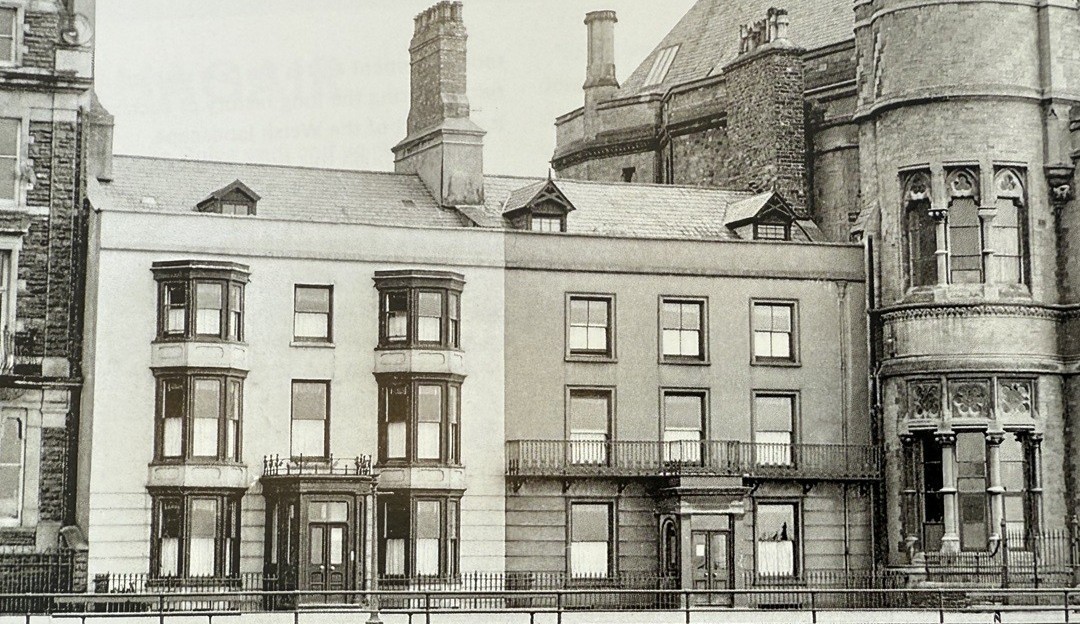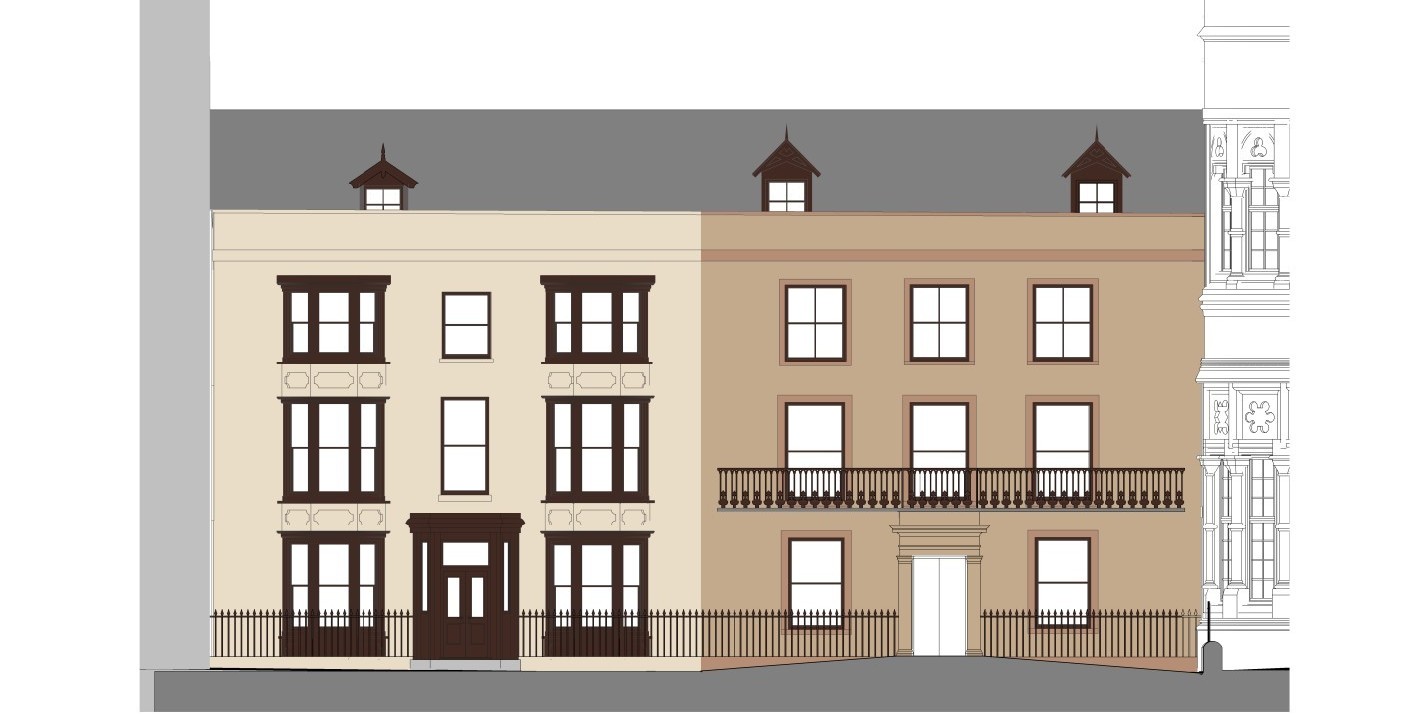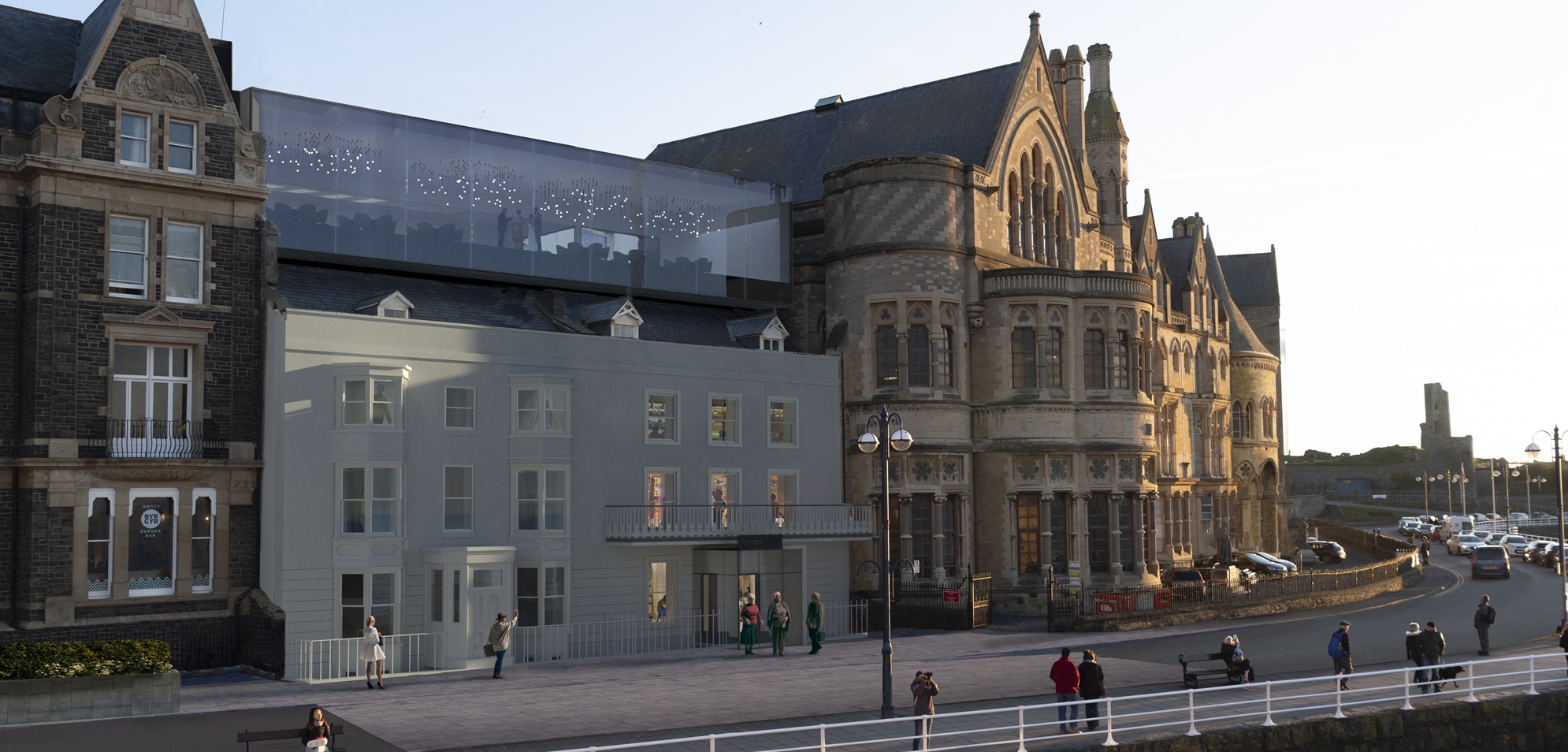Choosing the colours for the Georgian Villas

The Georgian villas in the early 1920s.
04 July 2025
During the last week of June work started on the painting of the Georgian Villas.
The colours chosen are classic earthy tones such as chocolate brown and a soft taupe for Villa 1 and a creamy off-white for Villa 2.
The paint used is mineral based and by the German manufacturer Keim.
It is designed to withstand the harsh seaside climate of the promenade whilst allowing the building to ‘breathe’.

Ben Sturgeon from Swansea Decorating Services painting Villa 1
In choosing the colours, the Old College project’s Conservation Architect Matthew Dyer from Austin-Smith:Lord reflected on the history of the villas, old photographs and evidence gathered as the restoration work progressed.
With the approval of the local authority’s Conservation Officer, Matthew settled on the colour scheme as it would have been in the early 1920s.
Built in 1811, the Georgian Villas (1 and 2 Marine Terrace) were originally developed as two separate houses and known as Mount Pleasant.
Villa 1 (1 Marine Terrace), the closest to Old College, had been leased by the University since 1901 as its first hall of residence for male students.
It subsequently became home for a short period to the Geography Department which had been established in 1918 and more recently provided office space.
The second villa, along with a number of other properties along Marine Terrace, was subsequently acquired by the expanding University to accommodate new academic departments and provide student residences.
As part of the ambitious project to transform the Old College into a major cultural and creative centre, the villas are being carefully restored and developed to become the main entrance from the Promenade and will feature a restaurant, bar and office space.
With so many changes to the Old College and the villas over the past 200 years, understanding their history informs the nature of the restoration work and the point in time to which they are returned.

A drawing of the villas showing the colours as they would have appeared at the beginning of the 1920s.
In the case of the villas, rendered mouldings were added to the windows of Villa 1 and bay windows to Villa 2 in the second half of the 19th century, and their colours have changed.
Initial artists impressions of the restored villas with the dramatic new glass fronted function room ‘floating’ above, show them painted in a lighter shade of grey.
Matthew Dyer explains: “The artist’s impression was undertaken before all of the paint analysis and review of documentation was undertaken and replicated what was there previously for the purpose of the graphics.
“During the project, we have referred to paint analysis reports, historic photographs which we have colourised and also information we have found as we have removed layers of paint to undertake repairs.
“The buildings would originally have been more simple, with square openings to the windows and slate sills. In the latter half of the 19th century the bay windows were added to Villa 2 and rendered mouldings were added to the windows of Villa 1. Due to this reason, the decision was taken not to present the buildings as they were when constructed (which would have been a sandstone colour), but the colours the buildings would have been after the changes were made.
“Based on this information the decision was taken and approved by the Conservation Officer to present the exterior as it would have appeared when the buildings were acquired by the University in the 1920s and as the two separate houses they originally were. The contrast between the two houses is strongly apparent in this black and white image dated 1921.”

Artist’s impression with the dramatic new glass fronted function room ‘floating’ above the Georgian villas. The colours were changed after layers of paint were analysied as the renovation work progressed.
According to Matthew, the energy and prosperity of the Victorian era was highlighted by the use of strong paint colours in combination with dark coloured woods and textiles.
“While the Georgians preferred lighter tones and to paint their windows and ironwork to simulate stone, the Victorians rejected this in favour of rich colours that took advantage of newly discovered pigments, or to simulate expensive tropical hardwoods or bronzes hence love of blues, purple browns, chocolate browns and greens for railings and rainwater goods. Darker colours in cities also masked the dirt of the industrialising cities, with the trend then spreading. Black, although associated with Queen Victoria through her long period of mourning, was difficult to use in the 19th century due to its long drying times. Although now popularised for rainwater goods and railings, it only really became universal in the 1940s as paint technology developed.
“White remained in use in rural settings where pigments were expensive or difficult to obtain, but it really only came back into fashion in the 1890s with the Queen Anne Revival. Even then, whites produced using lead or lime would have been “off-white” by our standards with brilliant whites only being available in the later 20th century.”
Once the painting work is completed, the focus on the outside of the villas will move to the restoration of the balcony on Villa 1 and then the removal of the scaffolding from this section of the project.
The Old College project is supported by The National Lottery Heritage Fund, the Welsh Government and the European Regional Development Fund, UK Government, the Coastal Communities Fund, The National Lottery Community Fund, philanthropic trusts and individuals.
